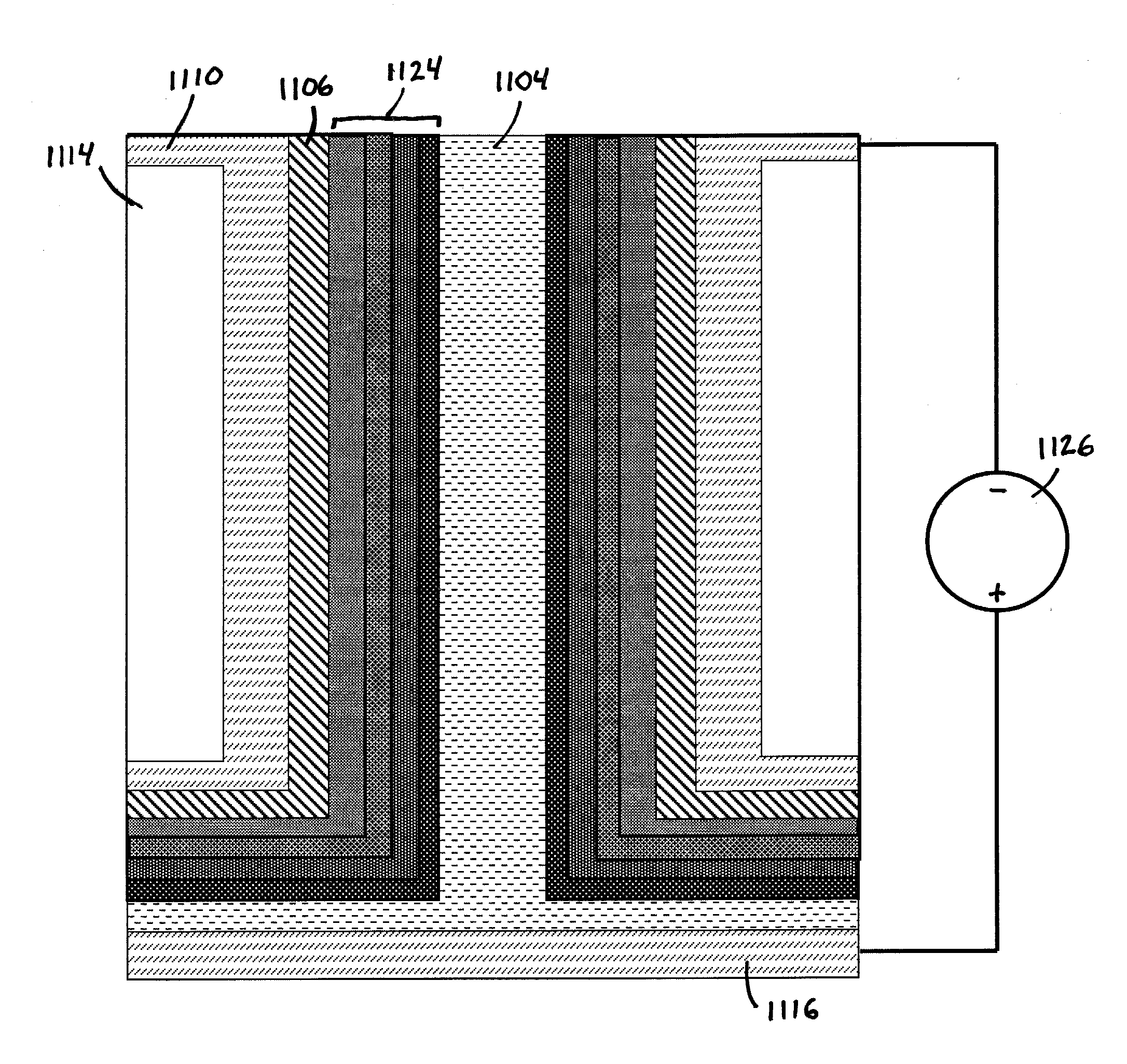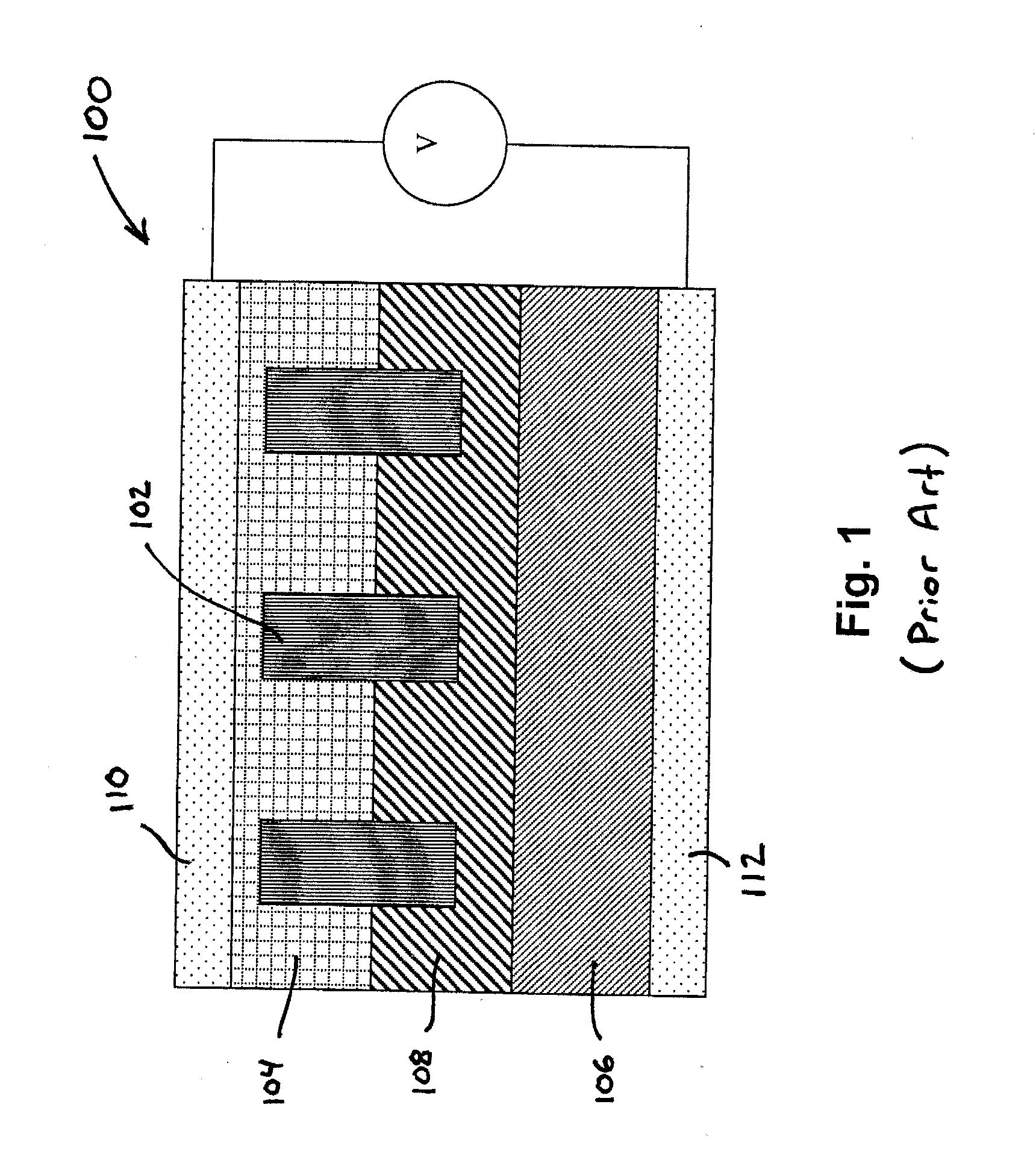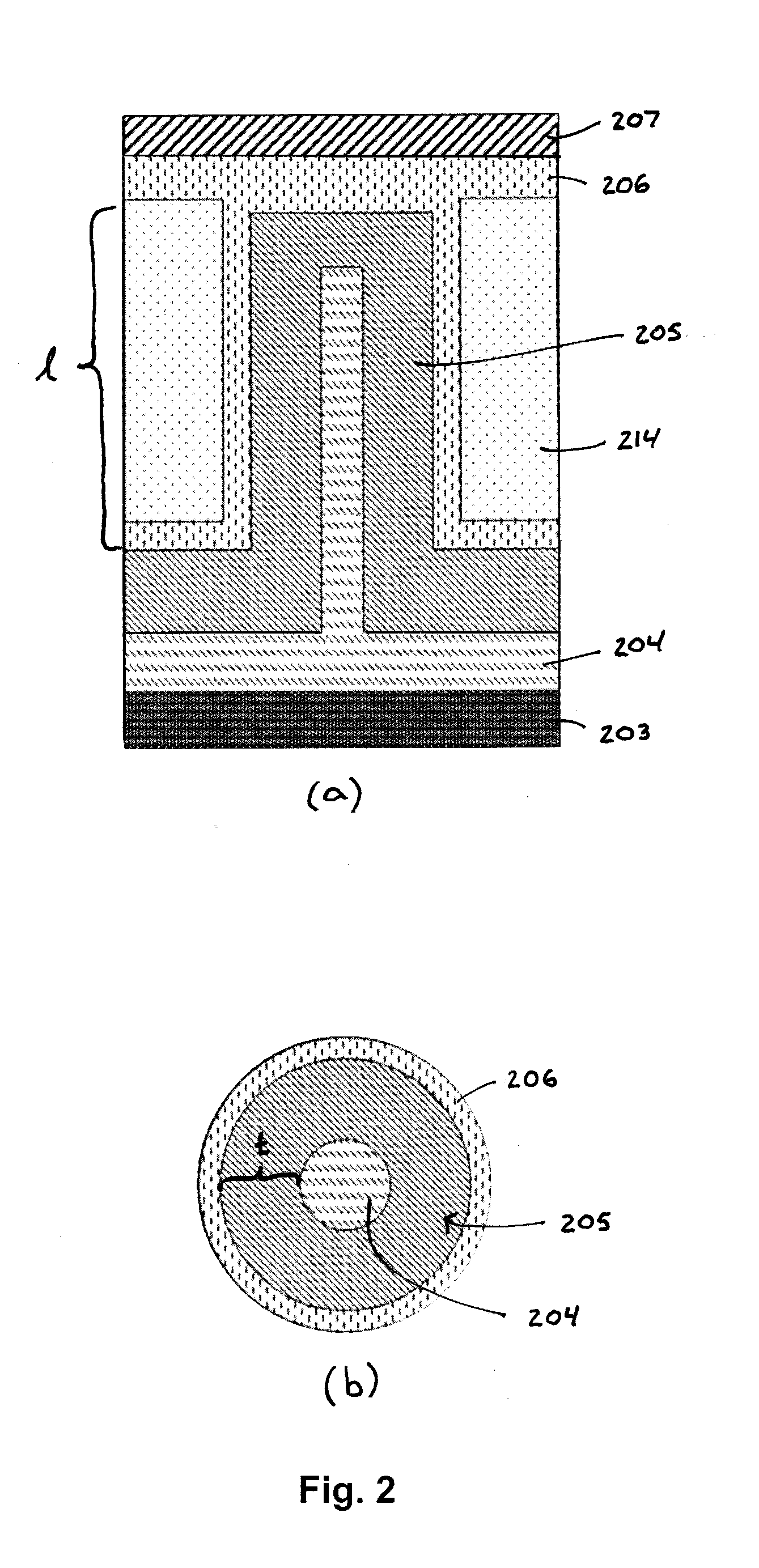Energy conversion and energy storage devices and methods for making same
a technology of energy storage device and energy conversion device, which is applied in the direction of sustainable manufacturing/processing, measurement of semiconductor devices, and final product manufacturing, etc., can solve the problems of limited efficiency of solar energy conversion into electricity in pv devices, prohibitively expensive, and complex addition of junctions, etc., to achieve high aspect ratio, increase the efficiency of energy conversion device and energy storage device, and reduce the effect of thermalization loss
- Summary
- Abstract
- Description
- Claims
- Application Information
AI Technical Summary
Benefits of technology
Problems solved by technology
Method used
Image
Examples
example 1
Blank Nanoporous Support Member
[0122]Blank nanoporous anodic aluminum oxide (AAO) support members are prepared in-part as described in U.S. Pat. No. 6,705,152 and U.S. Patent Publication No. 2007 / 0256562, which are each incorporated herein by reference in its entirety. In this example, AAO is formed using at least 98% pure Al foil. Optionally, prior to anodization, the foil can be rolled and pressure-annealed at about 350° C. and 5,000 psi for 20 min to improve its surface quality, achieve required thickness and reduce stress in the finished AAO support member. Al foil is anodized on both sides in 1% oxalic acid electrolyte at a temperature of 2° C. and anodization voltage of 100V (and as high as 300-400V in different electrolytes), until a charge density of about 2° C. / cm2 is accumulated, to form a sacrificial AAO layer. The sacrificial AAO layer can improve surface quality and pore channel ordering in the final AAO support member.
[0123]The resulting sacrificial layer of about 10 μ...
example 2
Arrays of Conductor Layers
[0128]Free-standing porous AAO support members are prepared as described in Example 1. Conductive material layers are grown by deposition of Al2O3-doped ZnO inside the pore channels using an atomic layer deposition (ALD) reactor. The ALD reactor is evacuated to less than 100 mTorr and heated to 110° C. and alternating gasses are injected into the ALD reactor.
[0129]In this regard, alumina is deposited on a free-standing 13 mm AAO support member by injecting trimethylaluminum (TMA) into the statically sealed ALD reactor to a total pressure of about 1 torr and holding it over the AAO substrates for 2 minutes. Then the gate valve is opened and the TMA is evacuated from the ALD reactor. After evacuation, ultrapure nitrogen is flowed through the reactor for 30 seconds and subsequently evacuated again to ensure removal of all unreacted TMA. The reactor is then filled with about 1 torr of water for 2 minutes, and is subsequently evacuated and again purged with nitr...
example 3
Coaxial Array Capacitor
[0131]A capacitor is formed by sequential deposition of coaxial conductive and dielectric material layers inside the pore channels of AAO. Conductive material arrays are prepared as described in Example 1. Conductive material layers with a wall thickness of about 19 nm are prepared by repeating the 17 cycles of ZnO plus 1 cycle of alumina sequence 6 times (see Example 2). A gold contact is sputtered on one side of the support member, and a conductive wire is attached using conductive epoxy.
[0132]A dielectric material is then deposited to form a dielectric material layer on top of the first conductive layer within the pore channels. Alumina is used as the dielectric material, which is deposited in the same manner as the alumina deposition described in Example 2. By depositing 50 cycles of alumina, a material layer of ˜6 nm thickness is deposited. To form a second conductive layer to complete the capacitor structure, another deposition of a conductive Al2O3-dope...
PUM
| Property | Measurement | Unit |
|---|---|---|
| Length | aaaaa | aaaaa |
| Length | aaaaa | aaaaa |
| Length | aaaaa | aaaaa |
Abstract
Description
Claims
Application Information
 Login to View More
Login to View More - R&D
- Intellectual Property
- Life Sciences
- Materials
- Tech Scout
- Unparalleled Data Quality
- Higher Quality Content
- 60% Fewer Hallucinations
Browse by: Latest US Patents, China's latest patents, Technical Efficacy Thesaurus, Application Domain, Technology Topic, Popular Technical Reports.
© 2025 PatSnap. All rights reserved.Legal|Privacy policy|Modern Slavery Act Transparency Statement|Sitemap|About US| Contact US: help@patsnap.com



